Physics & Astronomy announces the following 2015-16 graduate degrees awarded.
Master’s Degrees
Pooja Chopra (M.S.)
Saroj Dhakal (M.S.)
Sushila Khadka (M.S.)
Riffat Munir (M.S.)
Yuanzhi Wang (M.S.)
Leo Zella (M.S.)
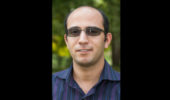
Rami Amro
Doctoral Degrees
Rami Amro, Ph.D.
Adviser: Dr. Alexander Neiman
Dissertation: ‘Nonlinear Stochastic Dynamics and Signal Amplifications in Sensory Hair Cells’
My dissertation research was concerned with understanding the underlying biophysical mechanisms in saccular hair cells in the inner ear. Sensory hair cells are the first stage in conveying the mechanical vibration into electrical current that initiates propagating action potential to the central nervous system. Inner hair cells are well known for their frequency selectivity, tuning, high sensitivity and nonlinear amplifications for the incoming stimulus, thus understanding their basic mechanisms helps in advancing the knowledge of projecting solutions for defects in the auditory and vestibular systems.
Present Position: Postdoctoral Scholar, University of California, Los Angeles, CA
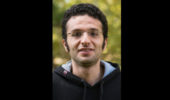
Mahmoud Asmar
Mahmoud Asmar, Ph.D.
Adviser: Dr. Sergio Ulloa
Dissertation: ‘Electronic and Spin Transport in Dirac-Like Systems’
My primary research was on graphene and Dirace-like systems. It was theoretical research.
Present Position: Postdoctoral Researcher, Louisiana State University, Baton Rouge, LA

Shloka Chandavar
Shloka Chandavar, Ph.D.
Adviser: Dr. Kenneth Hicks
Dissertation: ‘Photoproduction of Scalar Mesons Using the CEBAF Large Acceptance Spectrometer CLAS’
For my thesis project, I analyzed data from an experiment conducted at the Thomas Jefferson National Accelerator Facility, or JLab, located in Virginia. The results show evidence for production of a particle called a scalar meson, made from a quark-antiquark pair when a high-energy photon from the JLab accelerator hits a proton. The scalar meson seen has a mass of about 1.6 times the proton’s mass and provides new information about another hypothetical particle called a glueball, which has the same quantum numbers but is made only from gluons, with no quarks. This was the first observation of this particular scalar meson at JLab and was possible because of the high statistics of the data.
Present Position: Postdoctoral Researcher, Michigan State University, East Lansing, MI

Christopher Diltz
Christopher Diltz, Ph.D.
Adviser: Dr. Markus Boettcher
Dissertation: ‘Time Dependent Leptonic and Lepto-Hadronic Modeling of Blazar Emission
My research focused on understanding the high energy emission of a sub-class of active galactic nuclei called blazars. I used two codes that I wrote, in order to model the high energy emission of different blazars.
Present Position: Software Developer, MDS Engineering, Dayton, OH

Linda Hlophe
Linda Hlophe, Ph.D.
Adviser: Dr. Charlotte Elster
Dissertation: ‘Separable Representation of Nucleon-Nucleus Optical Potentials as Input to (d,p) Reaction Calculations’
My research was dedicated to the construction of separable representations of the nucleon-nucleus optical potentials. Theoretical calculations for deuteron-induced nuclear reactions require nucleon-nucleus optical potentials as input. The calculations are greatly simplified if the nucleon-nucleus potentials are of separable form.
Present Position: Gregory P Hansen Fellowship Postdoctoral Researcher, Michigan State University, East Lansing, MI
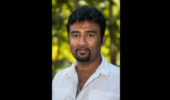
Chandrasiri Ihalawela
Chandrasiri Ihalawela, Ph.D.
Adviser: Dr. Gang Chen
Dissertation: ‘Sb-Te Phase-change Materials under Nanoscale Confinement’
My primary research was to understand and tune the crystallization properties of phase-change materials under nanoscale confinement to provide a better insight for efficient device applications.
Present Position: Visiting Assistant Professor, Miami University, Oxford, OH

Christopher Johnson
Christopher Johnson, Ph.D.
Adviser: Dr. Peter Jung
Dissertation: ‘Investigating the Slow Axonal Transport of Neurofilaments: A Precursor for Optimal Neuronal Signaling’
My research entailed modeling the dynamics of enzyme motor proteins that are associated with the slow axonal transport of neurofilament polymers. These models were used to test hypotheses on the motile mechanism of neurofilament movement observed in axons. Additionally, we developed computational models to explore the physiological function of axon morphology, which is sculpted by the aforementioned neurofilament movement.
Present Position: Data Analyst/Consultant, IBM Corp. Dublin, OH

Heath Kersell
Heath Kersell, Ph.D.
Adviser: Dr. Saw-Wai Hla
Dissertation: ‘Alternative Excitation Methods in Scanning Tunneling Microscopy’
I investigated single molecule systems and molecular networks at low temperatures, geared toward the development of devices at the nanoscale. I also utilized the X-ray absorption combined with scanning tunneling microscopy to establish the elemental identity and properties of nanoscale structures. In conjunction with this effort, I designed a first of its kind low temperature – ultrahigh vacuum – synchrotron X-ray assisted – scanning tunneling microscope capable of probing magnetic and chemical properties of materials.
Present Position: Postdoctoral Fellow, Lawrence Berkeley National Lab, Berkeley, CA

Sean Krupa
Sean Krupa, Ph.D.
Adviser: Dr. Eric Stinaff
Dissertation: ‘Nonlinear Optical Properties of Traditional and Novel Materials’
My research focused on non-linear optical processes which are used by emerging, quantum-based technologies. Specifically I conducted optical characterization on devices, materials, and applications based on photon pair production via nonlinear optics.
Present Position: Optical Engineer, Sotera Defense Solutions, Naval Research Lab, Washington, DC

Andrada-Oana Mandru
Andrada-Oana Mandru, Ph.D.
Adviser: Dr. Arthur Smith
Dissertation: ‘Ferromagnetic Thin- and Ultra-Thin Film Alloys of Manganese and Iron with Gallium and Their Structural, Electronic, and Magnetic Properties’
In my research, I prepared atomically smooth samples that I then investigated using a scanning tunneling microscope to probe the surface structure down to atomic level. I mainly investigated magnetic samples with great potential for real-world applications. These studies were combined with a variety of other methods through our many collaborations, in order to obtain a complete picture of the investigated systems.
Present Position: Postdoctoral Researcher, EMPA – Institute, Dubendorf, Switzerland

Sean McGraw
Sean McGraw Ph.D.
Adviser: Dr. Joseph Shields
Dissertation: ‘Outflow and Accretion Physics in Active Galactic Nuclei’
I studied the interaction between supermassive black holes and their host galaxies by probing winds in active galaxies. Specifically, I acquired spectra of these winds using a telescope and estimated their kinematics and energetics by conducing variability analyses.
My plan is to first acquire additional research experience as a postdoctoral scholar. I hope to become a professor at an undergraduate institution where I can focus on teaching and research with students.
Present Position: Postdoctoral Research Scholar, Pennsylvania State University, University Park, PA
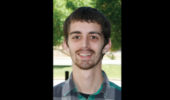
Brian Muccioli
Brian Muccioli, Ph.D.
Adviser: Dr. Madappa Prakash
Dissertation: ‘Equations of State for Simulations of Supernovae, Neutron Stars and Binary Mergers’
In my research, I employed state-of-the-art models of nuclear interactions to calculate the equation of state. The resulting equation of state is to be used in simulations of astrophysical objects.
Present Position: Scientist, Frontier Technology, Beverly, MA

Sneha Pandya
Sneha Pandya, Ph.D.
Adviser: Dr. Martin Kordesch
Dissertation: ‘Modification of Inert Gas Condensation Technique to Achieve Wide Area Distribution of Nanoparticles and Synthesis and Characterization of Nanoparticles for Semiconductor Applications’
I synthesized nanoparticles using a bottom-up vapor phase technique and characterized them for semiconductor applications. I also built the nanoparticle synthesis instrument and upgraded it for large area, direct deposition of nanoparticles.
Present Position: D1C Process Engineer, Intel Corporation, Hillsboro, Oregon
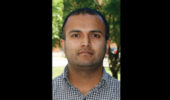
Arbin Thapaliya
Arbin Thapaliya, Ph.D.
Adviser: Dr. Daniel Phillips
Dissertation: ‘Topics in Effective Field Theories for the Strong Interaction’
My primary research was looking at various low energy QCD processes.
Present Position: Tenure-track faculty member, Franklin College, Franklin, IN

Venkata Ramana Kumar Thota
Venkata Ramana Kumar Thota, Ph.D.
Adviser: Dr. Eric Stinaff
Dissertation: Tunable Optical Phenomena and Carrier Recombination Dynamics in III-V Semiconductor Nanostructures’
My primary research was focused on studying the light matter interaction at the nanoscale. Using ultrafast lasers, I was able to measure the optical interaction of III-V semiconductor nanostructures with high spectral and temporal resolution.
Present Position: Process Technology Development Engineer, Intel Corporation, Hillsboro, OR

Haocheng Zhang
Haocheng Zhang Ph.D.
Adviser: Dr. Markus Boettcher
Dissertation: ‘Polarization signatures in blazar emission’
My primary research involved radiation and polarization signatures from blazar emission.
Present Position: Postdoctoral Research Associate, University of New Mexico, Albuquerque, NM



















Comments